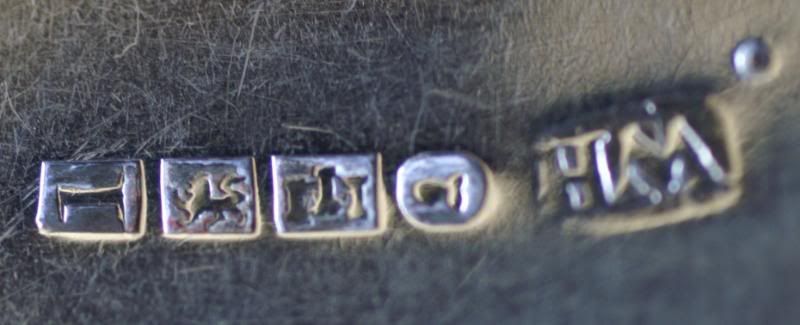Thank you all for your responses. I was thinking more, Paul, about your suggestion of Exeter origin, and William Hope does fit nicely with the potential 1822 date. He started in 1816 and carried on to 1833.
I'm embarrassed, after writing an article on 1797-1810 Exeter hallmarking, to say that I'm not familiar with Exeter marking after that period.
I've only owned one William Hope spoon. Excuse the poor photo, but I took it quite a while ago. It is from an 1827 teaspoon, and does have the city mark. However, I am not sure when Exeter first introduced this mark, so it could be between 1822 and 1827. Either way, the maker's mark is very similar.
I knew I would have to write a prequel to my Exeter article, but I didn't realise that a sequel would be necessary as well!
Miles

.






